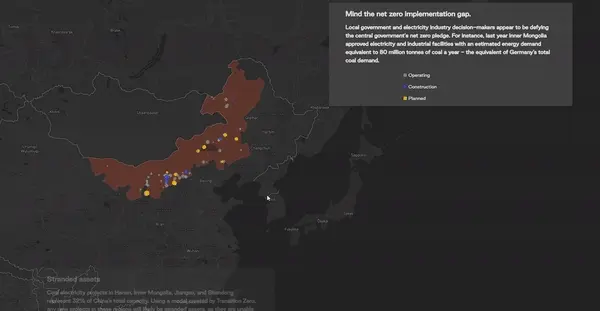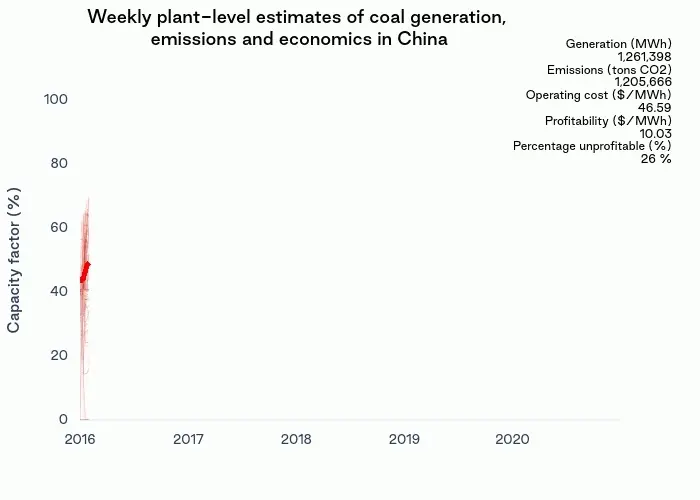Analysis
April 15, 2021
Turning the Supertanker
Using satellite imagery and machine learning, this report shows replacing China’s coal fleet with zero carbon alternatives could save $1.6 trillion.

“The ground-breaking analysis in this new report by TransitionZero shows that not only can China meet their climate goals, the country and its leaders can accelerate them rapidly.”

Al Gore
Former U.S. Vice President

Introduction
The announcement by President Xi Jinping to the UN General Assembly last September that China would aim to be carbon neutral before 2060 represents a landmark change in climate policy and could help significantly slow down global warming. To realise President Xi’s net-zero announcement, huge challenges will need to be overcome. But there is already strong evidence that the target is achievable.
In this report, we use satellite imagery and machine learning to:
- Provide coal plant emissions estimates and fundamental analysis of China’s recently launched Emissions Trading System (ETS)
- Predict coal plant closures through a Risk Index System (RIS) to support the government’s efforts to implement the net-zero target
- Recommend the closure, conversion or reserve capacity of China’s coal plants in a manner consistent with the UN’s Sustainable Development Goals (SDGs) via a net zero-aligned coal phase-out mechanism

We model one gigawatt or larger plants cooled by natural draft technologies. For these plants, our models currently achieve a mean average error of 14% at the plant level based on data from the EU, the US and Australia and 11% at the provincial level based on disaggregated data from the Chinese government. These estimates inform our ETS analysis, RIS and net zero aligned coal plant phase out mechanism.
Key findings
- To reduce data misreporting, the Ministry of Ecology and Environment should explore introducing an anomaly detection system that uses a combination of onsite Continuous Emissions Monitoring Systems (CEMS), “offsite” CEMS from the use of satellite imagery and machine learning
- China’s ETS is oversupplied by 1.56 billion tons from 2019 to 2020 – the equivalent of a year’s worth of EU ETS emissions
- Replacing China’s coal fleet with zero carbon alternatives could save $1.6 trillion or incur a net-negative abatement cost of $20/tCO2.
- Net zero alignment requires the carbon intensity of power generation to halve by 2030 from 672 gCO2/kWh today to 356 gCO2/kWh
The implementation gap between the government’s net-zero target and what is happening on the ground is a cause for concern from both a climate and economic perspective.
As such, the report recommends China: (1) cancels all new coal immediately and issue guidance on a net zero aligned phase out; (2) uses satellite imagery and machine learning to help reduce ETS enforcement costs; and (3) reform the ETS to drive abatement consistent with their net zero goal.
Data download
TransitionZero is happy to share the data underpinning this report. The data we generated in Turning the Supertanker includes the following estimates of all operating coal power plants in China:
- Net generation (MWh)
- Carbon emissions (MtCO2)
- Short and long run marginal cost ($/MWh)
- Gross and net profitability ($/MWh)
- Undepreciated value (M$)
- Marginal abatement cost ($/tCO2)
- Risk index system (RIS) score (0-1)
- Net zero-aligned phase out year (2021 to 2040)
The report aims to showcase how plant or asset level production estimates have the potential to spur a Cambrian explosion of use cases to understand transition risk and opportunity.
We hope this data will increase information flows and empower policymakers and investors to align capital and operational decisions with the Paris Agreement.

